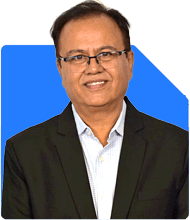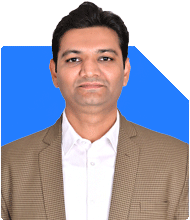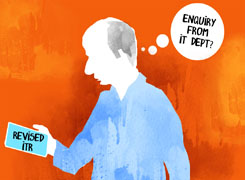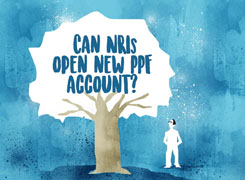Ramalingam Kalirajan |8442 Answers |Ask -Follow
Mutual Funds, Financial Planning Expert - Answered on Jan 20, 2025
He has an MBA in finance from the University of Madras and is a certified financial planner.
He is the director and chief financial planner at Holistic Investment, a Chennai-based firm that offers financial planning and wealth management advice.... more

I am 34 year old having equity Mutual fund portfolio of 12,00,000. EPFO account started last year with 1800+1800=3600 rs pm. I have SIP of 4000 Rs in HDFC small cap fund, Rs 3000 in tata Small cap fund & rs 3000 in HSBC small cap fund. I have 2 year old child. Please help me to calculate retirement fund required at age of 58. My monthly expenses are 32k to 35k which may increase to 40k after my child go to school. I am planning to increase 1000 rs in SIP every year. Please guide.
Your EPF contribution started recently, providing an additional retirement corpus.
The SIPs in small-cap funds show a growth-focused strategy but need diversification.
Monthly expenses of Rs 32,000–35,000 are likely to rise significantly over time.
You plan to increase your SIP contribution by Rs 1,000 annually, a wise decision.
Estimating Your Retirement Corpus
At retirement, your expenses will be higher due to inflation.
Assuming your expenses rise to Rs 40,000 when your child starts school:
Expenses will continue increasing yearly with inflation.
You will need to account for at least 25 years of post-retirement life.
Include medical expenses, as they form a significant part of retirement costs.
Current Investments and SIP Growth Potential
1. Equity Mutual Fund Portfolio (Rs 12,00,000)
Your existing portfolio will grow over the years.
Focus on consistent contributions and regular reviews.
2. EPF Contribution (Rs 3,600 Monthly)
EPF ensures stable growth through compounding.
It is risk-free and adds balance to your retirement plan.
3. SIP in Small-Cap Funds (Rs 10,000 Monthly)
Small-cap funds offer high growth potential but come with volatility.
Over the long term, they can generate significant wealth.
Diversification for Stability and Growth
Avoid focusing entirely on small-cap funds.
Include large-cap and flexi-cap funds for a balanced portfolio.
Diversification reduces risk and improves long-term returns.
Consult a Certified Financial Planner for suitable fund recommendations.
Benefits of Increasing SIP Contributions
Your plan to increase SIP by Rs 1,000 annually ensures higher investments.
Over time, these incremental investments will compound significantly.
A disciplined approach helps in achieving your retirement corpus.
Factors Influencing Retirement Planning
1. Inflation Impact on Expenses
Inflation erodes purchasing power, increasing future costs.
Assume 6–7% annual inflation while planning.
2. Medical and Lifestyle Needs
Medical expenses tend to rise with age.
Include provisions for healthcare and leisure in your retirement fund.
3. Education Expenses for Your Child
Allocate funds separately for your child’s education.
Avoid using retirement savings for education costs.
Actionable Steps to Achieve Retirement Goals
1. Increase SIP Amounts Gradually
Start by increasing your SIP contributions annually as planned.
Automate the increase to maintain consistency.
2. Diversify Beyond Small-Cap Funds
Invest in large-cap and flexi-cap funds for stability and consistent returns.
Actively managed funds, chosen with expert advice, are preferable.
3. Review and Rebalance Regularly
Monitor your portfolio every 6–12 months.
Adjust your investments based on market conditions and life changes.
4. Build an Emergency Fund
Maintain 6–12 months’ expenses in a liquid fund.
This prevents premature withdrawals from your investments.
5. Insure Your Life and Health Adequately
Ensure adequate life and health insurance coverage.
This safeguards your family’s financial future during unforeseen events.
Tax Considerations for Your Investments
1. Mutual Fund Taxation
Equity mutual funds’ LTCG above Rs 1.25 lakh is taxed at 12.5%.
STCG on equity funds is taxed at 20%.
2. EPF Contributions
EPF contributions and maturity amounts are tax-exempt, ensuring efficient growth.
Planning for Child’s Education and Future
Set up a dedicated SIP for your child’s education expenses.
Invest in a balanced portfolio to meet educational costs when needed.
Final Insights
Your current investment strategy is commendable, but diversification is essential. Increasing SIP contributions regularly will help achieve your goals. Ensure you account for inflation, medical needs, and your child’s future expenses. A Certified Financial Planner can assist in aligning your investments with your retirement objectives and provide ongoing guidance.
Best Regards,
K. Ramalingam, MBA, CFP,
Chief Financial Planner,
www.holisticinvestment.in
https://www.youtube.com/@HolisticInvestment
You may like to see similar questions and answers below
Sanjeev Govila |458 Answers |Ask -Follow
Financial Planner - Answered on Nov 25, 2023
Ramalingam Kalirajan |8442 Answers |Ask -Follow
Mutual Funds, Financial Planning Expert - Answered on Apr 27, 2024
Sunil Lala | Answer |Ask -Follow
Financial Planner - Answered on Feb 11, 2024
Dr Nagarajan J S K |401 Answers |Ask -Follow
NEET, Medical, Pharmacy Careers - Answered on May 15, 2025
Dr Nagarajan J S K |401 Answers |Ask -Follow
NEET, Medical, Pharmacy Careers - Answered on May 15, 2025
Dr Nagarajan J S K |401 Answers |Ask -Follow
NEET, Medical, Pharmacy Careers - Answered on May 15, 2025
Dr Nagarajan J S K |401 Answers |Ask -Follow
NEET, Medical, Pharmacy Careers - Answered on May 15, 2025
Dr Nagarajan J S K |401 Answers |Ask -Follow
NEET, Medical, Pharmacy Careers - Answered on May 15, 2025
Dr Nagarajan J S K |401 Answers |Ask -Follow
NEET, Medical, Pharmacy Careers - Answered on May 15, 2025
Vipul Bhavsar |83 Answers |Ask -Follow
Tax Expert - Answered on May 15, 2025
Vipul Bhavsar |83 Answers |Ask -Follow
Tax Expert - Answered on May 15, 2025
Vipul Bhavsar |83 Answers |Ask -Follow
Tax Expert - Answered on May 15, 2025
Vipul Bhavsar |83 Answers |Ask -Follow
Tax Expert - Answered on May 15, 2025













.jpg)











